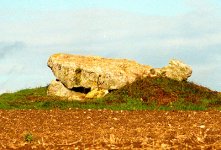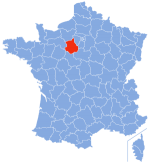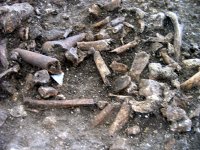sparkey
Great Adventurer
- Messages
- 2,250
- Reaction score
- 352
- Points
- 0
- Location
- California
- Ethnic group
- 3/4 Colonial American, 1/8 Cornish, 1/8 Welsh
- Y-DNA haplogroup
- I2c1 PF3892+ (Swiss)
- mtDNA haplogroup
- U4a (Cornish)
A PhD thesis by Marie Lacan (in French) gives multiple samples of ancient DNA, including 2 Y-DNA samples from the La Pierre Fritte Dolmen. Both turned out to be I2a1a (Lacan uses "I2a1," it's M26+, the type common now in Sardinia). I put the STRs into Cullen's Predictor, and confirmed the high confidence of this result. See also Jean Manco's report.
These are interesting, although perhaps not unexpected, samples. They're nearly contemporary with the Treilles samples that turned up I2a1a among the more common G2a.
The mtDNA from the same site was K and K1a. Other ancient samples yielded H and U5, including Mesolithic H from Guipuzcoa.
These are interesting, although perhaps not unexpected, samples. They're nearly contemporary with the Treilles samples that turned up I2a1a among the more common G2a.
The mtDNA from the same site was K and K1a. Other ancient samples yielded H and U5, including Mesolithic H from Guipuzcoa.




